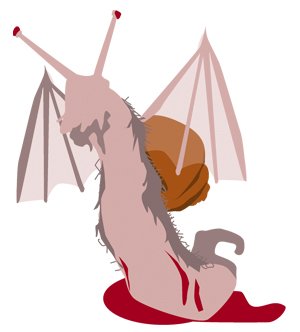Dwarf Fortress diary: How seven drunks opened a portal to Hell
Tony Ellis, witnessing the ferocious attack, drops a perch in shock.
The searing pain in the injured McCormick's hand renders him unconscious. The confused bugbat continues to patrol menacingly about the apartments, sending frightened dwarves into a mass panic. Some refuse to reenter the fortress. It is decided that the woodcutter, Tom Francis, should be tasked with ending the creature's life and returning calm to Oakfire.
He forgoes his axe, instead booting the bugbat to the floor and caving in its tiny skull with a clumsily swung fist. In the ruckus, the pest inflicts one parting shot, a neat incision along Francis's left foot, severing a tendon and a motor nerve. He may never walk again. He's carried to his bed, where he's watered and fed during fleeting and delirium-addled moments of consciousness.
Four Puppy Bones
Certain injuries are permanent, such as this wound to Tom Francis's foot, but in hindsight some basic medical care would've had him back on his feet in no time. “It's key to have a doctor active, now that they're working better,” scolds Tarn Adams, the game's programmer. “Once you've got that, crutches, traction benches, plaster and cloth for casts, thread for sutures, splints, more cloth for bandages... it should all help to get your dwarves back on their feet, among the ones they have left. If you aren't using the latest version, hospital care was very busted, to the point where they'd just keep suturing and suturing the same wound.”
Cautious dwarves return to the digsite to find, in that narrow, dark space, a gory mess. Tun Eribesmul, a wood burner, had been caught off guard by the bugbat on its upward flight into Oakfire. Eribesmul's head had been eaten by the creature. He was alive as it happened too, fading in and out of consciousness as the bugbat's chitinous jaws scraped away at his hair and flesh, while his own warm blood pooled around him. The hobbled Tom Francis is luckier than he knows.
“Seal the dig site,” comes the order, one dead dwarf too late. Craig Pearson works quickly to shape a bauxite floodgate to cap the tunnel, his hands gliding purposefully along the stone's surface, like a pianist, but with a big rock instead of a piano. The dig site can only be opened using a lever in Tim Edwards' quarters – the dig to hell will resume on his command. Pearson pauses his work, his head swimming with thick aromas.
Owen Hill is cooking bugbat roast.
Keep up to date with the most important stories and the best deals, as picked by the PC Gamer team.
Stressed, or simply inspired dwarves will occasionally construct legendary artefacts, objects that are immediately added to the world's permanent records. They give your fortress historical worth, becoming treasures in the game's Adventurer mode (a Roguelike played in your persistent world). They can be discovered and, in some cases, wielded.
Was it a coincidence that McCormick chose bugbat bones? “Heh! That was a coincidence,” admits Tarn. “A dwarf will look at fortress history, the wider history and their own preferences, but they don't use every personal trauma, although it's certainly a fair thing to do and new things creep in on occasion. There's a historical event for people being wounded, where it tracks the specific wounds, but if I remember I haven't linked that into fortress mode yet. Once that's done, any variety of mutilation will be recorded on the artwork, but it still won't get you to the point where they grab the specific bones of a critter they have history with.”
Even less symbolic, then.
Tun Eribesmul was a good dwarf, and a hard working dwarf, who had his head eaten to bits. He tells this to Graham Smith as he hovers above his bed. Smith is startled awake. Eribesmul, satisfied, glides through a wall and into the meeting hall, where a party is taking place between several dwarves, four rabbits, a cow, a horse and a dog. It's a good party. The sight of the translucent and howling Eribesmul descending from the ceiling brings the fun to an end, and the dwarves flee. Eribesmul floats for a while in the meeting hall, dead and bored. And sort of sad, to be honest.
Craig Pearson places a plain siltstone slab in Oakfire's entrance hall, where a now composed Graham Smith makes an engraving as solemn as it is tardy. “In memory of Tun Eribesmul 186- 252.” Another task left too late, but at least Eribesmul's ghost finally rests. He vanishes from the meeting hall. His corporeal leftovers, meanwhile, rot in the tunnel.
In previous generations of the game, proper respect only needed to be paid to the nobles, the Dukes, Barons and Counts, of the fortress. And even then, that respect only needed paying prior to them corking it. That is, they'd demand to see the grand mausoleum they would one day be put to rest in. If it wasn't to their liking, they'd throw a tantrum until you'd upgraded their surface level ditch to a deep, gold-swaddled burial chamber. Once they'd actually gone for the big sleep, they honestly didn't mind where.
Now, however, graveyards are necessary to ensure a haunt-free fortress.

Eribesmul's body couldn't be reached, but that engraved slab in his honour would suffice. Had his body been easier to retrieve, Craig Pearson could have fashioned a coffin and placed it in a tomb. This is preferable, as the sight of a corpse creates a negative happiness modifier in other dwarves. Well it would, wouldn't it?
“We'd been reading the Time Life Enchanted World books that scared my brother when he was young,” explains Tarn, of ghosts. “And we decided to throw in some night creatures and undead beasties last Halloween for fun. As it happens, right now I'm adding catacombs and further night creature/undead types. Once we've got some more variety, we'll probably start to explore some more depth in the relationships between the living and the dead.”
Form the Militia
Oakfire now has a militia of six proud dwarves and one proud dog. Two axedwarves, two speardwarves and two wrestlers, barely trained, inexperienced and armourless. They'll do. Oakfire can continue its for-whatever-reason urgent downward trek toward its dark objective. The tunnel is reopened, and behind the bauxite seal waits a small crowd of impatient, underdwelling beasts. Oakfire is ready for them. No, the opposite of ready. Unready. That's it.
Crundles stream forth from the tunnel entrance, at least half a dozen in number. The militia had never seen such creatures. They strike and swing and thrust blindly. Several of the untrained dwarves are injured in the affray, Stukos Adilinen's ear is torn off. Amid the ruck, Graham Smith and Tim Edwards creep into the now cleared tunnel and make their way down to the dig site. As long as the militia can occupy the creatures of the earth above them, they can continue the dig below. The journey to hell is now Oakfire's priority. The safety of its dwarves a secondary concern. The tiny crundles are defeated.
Owen Hill serves crundle stew.
Butchers are an important part of any fortress. An experienced one can maximise the amount of food a corpse provides. Tiny crundles only have a few edible parts, but bugbats are a veritable feast, with a brain, lungs, liver and tripe to be harvested from their tiny dead bodies. A decent cook will turn fat into tallow, which will keep forever at room temperature. In larger fortresses, animals can be tamed and slaughtered for a regular supply of meat.
An overpopulation of cats and dogs in a fortress might also demand an impromptu pet-feast, although if a dwarf has claimed ownership of a cat or dog, they won't allow it to be eaten. If their pet dies through misadventure they become cripplingly depressed. Pets aren't worth it, certainly not in Oakfire.

